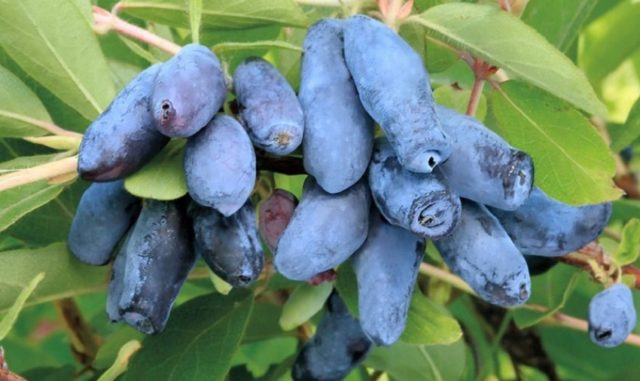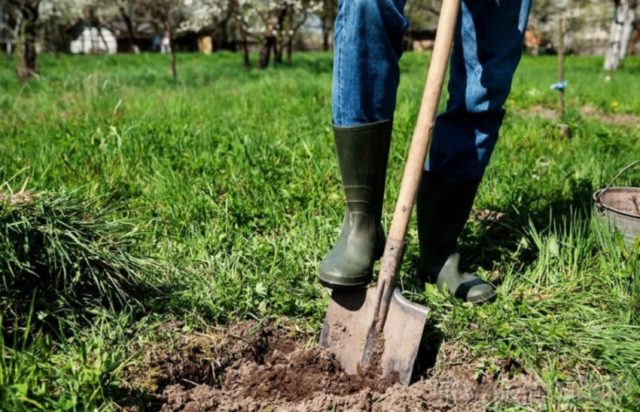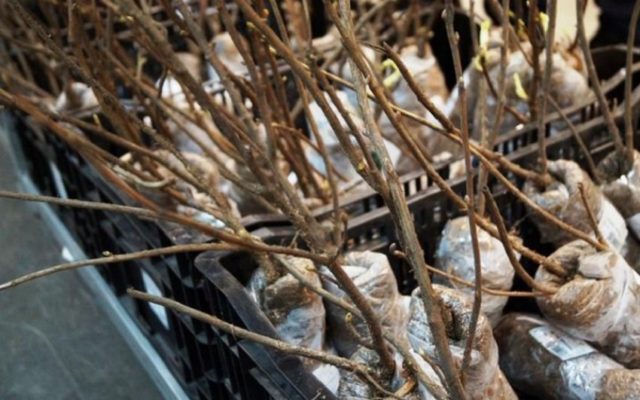Content
Honeysuckle Indigo is one of the unique plant species, which is called the natural "elixir of youth". Although the berry is not very noticeable, and the size is small, it has a lot of useful properties. The composition of honeysuckle fruits contains selenium - a rare element necessary for the human body. About 200 varieties of honeysuckle are known, but only a few of them are grown in the vastness of Russia in the Far East and Eastern Siberia.
Description of Honeysuckle Indigo
Gardeners note that the bulk of honeysuckle varieties have a sour taste or a slight bitterness. Canadian breeders at the University of Saskatoon have been working on new varieties since 1999. Dr. Robert Bors has developed a sweet-tasting edible species called Indigo. It has not only a pleasant taste, but also high winter hardiness, resistance to pests and diseases, late ripening, decent yield.
Indigo Honeysuckle Varieties
The type of useful shrub has more than one option. Russian gardeners are very familiar with such Indigo varieties as Jem and Yam. They have received well-deserved popularity and demand due to their characteristics. Growing such a variety of Indigo on the site is the dream of many honeysuckle taste lovers. Photos and descriptions of the Indigo honeysuckle variety help to make the right choice for the site.
Honeysuckle Indigo Yam
A variety of edible honeysuckle with a slightly sour taste. The average height of the shrub is about 1.8 m, the shape is erect, up to 1.3 m in diameter. The fruits are strong, elongated, blue in color, almost do not crumble. Weight - 1.3 g. The strength of Indigo berries makes it possible to harvest the crop in a mechanized way. According to reviews, edible honeysuckle Indigo Yam is highly resistant to diseases, it is considered the most productive variety. Withstands a drop in temperature to -45 ° C. Prefers sunny places, but also tolerates partial shade well. The variety is unpretentious to the composition of the soil, loves loam or sandy loam with sufficient moisture capacity.
The leaves of the variety are oblong, Indigo Yam blooms with light yellow flowers. The beginning of fruiting is 3 years after planting, the harvest is ready for harvest in mid-June. One bush yields up to 2.5 kg of ripe berries. Refers to self-infertile, therefore, requires planting pollinators. The best pollinators for the Indigo Yam variety are recognized: Honey Blue, Magic, Aurora, Delight.
The Ural and West Siberian regions have ideal conditions for growing Indigo Yam. A good addition to the description of the Indigo Yam honeysuckle variety will be a photo of the plant:

Indigo Yam has a very attractive berry shape
Honeysuckle Indigo Jam
Another Canadian variety of Indigo honeysuckle.

The amazing characteristics of Jam berries attract gardeners in any region.
In the reviews, gardeners claim that the Indigo Jam honeysuckle variety is endowed with very successful characteristics. This allows you to grow it in summer cottages. The bush is very neat, although spreading. The height of an adult plant is about 1.6 m, diameter is 1.2 m. The growth force is large, the annual growth is numerous and powerful. Leaves are dense, pointed at the ends. Indigo Berry Jam is even oval, black-purple in color, weighing 1.1-1.3 g. The flesh of the fruit is dense, resembles jelly in consistency.
The variety is suitable for picking mechanically due to the density of the berries, which do not crumble from the bush. The yield declared by the originator is from 4 kg to 5 kg of fruits from one bush. The first harvest can already be obtained 2-3 years after planting. The Indigo Jam honeysuckle variety also needs pollinators. The best are Honaybi, Tundra and Aurora.
Recommended for growing in the Ryazan region and the Moscow region. The most attractive characteristics of the Indigo Jam bush:
- excellent taste parameters;
- berries do not crumble;
- good portability;
- excellent frost resistance and drought resistance;
- early flowering;
- high stable yield;
- decorative effect of the bush;
- early maturity.
Some gardeners dislike the small size of the Jem variety. Illustratively about Canadian honeysuckle:
Planting and caring for honeysuckle
Having learned about interesting varieties of Indigo honeysuckle, many are interested in how to plant and grow a useful shrub. Planting is a very important stage in the life of a plant. Further development and growth of any variety depends on the correctness of the process. If everything is organized correctly, then the productivity of the bush remains for many years. The main points that should be paid attention to are timing, place, preparation of planting material and soil. Then it is important to perform the landing algorithm correctly.
Landing dates
Indigo honeysuckle is planted in autumn and spring. When choosing the time, they are guided by the climatic features of the region, as well as their influence on the vegetation of plants. It should be borne in mind that the awakening of the buds of the bush begins in mid-March. It is important that the soil is sufficiently warmed up at this time. Such conditions are possible only in the southern regions of Russia. Therefore, it is preferable to plan a spring planting in the south, and leave in other regions at the beginning of autumn. The best time is late August or early September.

A well-chosen planting time will allow the plant to quickly gain strength.
Selection and preparation of the landing site
In order for the Indigo honeysuckle harvest to meet the indicators declared by the originator, you need to find the ideal place for the plant. For culture, this is a very well-lit area. The second requirement is wind protection. It can be artificial or natural, for example, other shrubs, trees. Based on the requirements of honeysuckle to the landing site, it is necessary to allocate a place on the southern or southeastern side of the site with good protection from wind and draft.
The quality of the soil for Indigo does not really matter.
It is noted that the yield of honeysuckle is much higher on fertile soil, loose and light. Groundwater should be at a depth of at least 1.5 m.
The preparation of the place should be done six months before planting the seedlings. Cultivate or dig up the soil to a depth of 40 cm. Then disinfect with a solution of copper sulfate (3%). Prepare the working solution from 10 liters of water and 300 g of the drug, consumption - 1 liter per 10 sq. m. After a week, add 1 sq. m. m manure (20 kg), wood ash (400 g), sand (10 kg) and dig it again to a depth of 20 cm.
Planting holes for Indigo honeysuckle should be prepared 3 weeks before the scheduled date.

The pit must be prepared in advance so that the soil can settle.
For pollination to take place efficiently, the pits should be placed in a circle, leaving a central place for the pollinator. The distance between the holes is 1.5 m, the diameter of the hole is 40 cm, the depth is 40 cm. Before planting, cover the holes with foil.
Landing rules
Fertile soil must be introduced into the pit in advance or simply mix the soil with complex fertilizer (150 g per 1 well). If the Indigo seedling is purchased in a container, then its survival rate is much higher, and the planting process is easier:
- remove the plant from a container with a lump of earth;
- carefully place in the hole;
- cover with earth, slightly compacting the soil;
- water abundantly.
For open-root Indigo seedlings:
- form a mound, establish a plant, spread roots;
- cover with soil, periodically shaking the seedling;
- compact the soil, water abundantly.
Leave the root collar at ground level. Grind the near-stem circle with compost.
Watering and feeding
Watering is one of the main activities for caring for a shrub. Honeysuckle Indigo enough 30 liters of water with a frequency of 1 time in 14 days per bush. When the seedlings are still small, the amount of water is reduced to 10 liters, but the frequency of watering is increased - once a week. With insufficient watering, the berries acquire bitterness. After watering, be sure to loosen the soil and mulch. As soon as the mulch layer settles and becomes less than 5 cm, it needs to be renewed.
You can start feeding Indigo honeysuckle from 2 years after planting. In the spring, before the buds awaken, add 10 kg of manure under the bush, but only rotted. After flowering, add wood ash (500 g). In mid-September, feed with superphosphate (50 g) and potassium salt (30 g).
Pruning
Another important event for culture. It includes:
- Sanitary pruning. It involves the removal of dry, broken, damaged, thickening and creeping branches.
- Anti-aging. Such pruning is necessary for bushes after 10 years. The process consists in removing all non-fruiting shoots.
Wintering
Winter-hardy varieties do not require additional measures to prepare for winter. Only young plants in regions with a harsh climate can be sheltered. For the rest, a layer of mulch of about 15 cm is sufficient to protect the roots.
Reproduction
Reproduction of Indigo honeysuckle can be done in several ways:
- Green cuttings. Cut the material from the shoots of the current year. Time - the period when the ovaries begin to form on the bushes. Choose the strongest growths, cut into 12 cm long pieces with 3 buds. Soak for a day in Kornevin's solution (according to the instructions). Plant in the ground, cover with bottles, periodically moisten and ventilate. Take off the shelter in a month.
Even an inexperienced gardener can propagate honeysuckle with green cuttings.
- Lignified cuttings. Prepare the material in late September or early October, always after the leaves fall. Cut the growth of the current year into pieces with 2-3 internodes. Wrap in paper or burlap, dig in to a depth of 10 cm, sprinkle with foliage. In the spring, plant at an inclination of 45 °, leaving 1 internode above the ground.
Lignified cuttings require proper storage
- By dividing the bush. Dig up the plant in the spring before the buds awaken or in the fall after the foliage is shed. A bush aged 3-5 years is suitable. Divide it into several parts, which are seated in separate holes.
- With any method, varietal characteristics are preserved.
Diseases and pests
The culture is distinguished by good resistance to pests and diseases, especially with proper care. Indigo bushes only need preventive measures. In the spring, before the buds swell and in the fall at the end of the growing season, spray the plant and soil with a solution of copper sulfate (1%). If the summer is humid, then periodically dust the foliage with wood ash. If there has been an infection with fungal diseases, you should use "Fitosporin".
Conclusion
Honeysuckle Indigo is a unique plant with decent characteristics. Proper agricultural technology will allow you to grow a luxurious bush with useful berries on your site.










